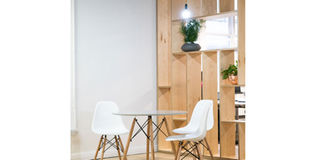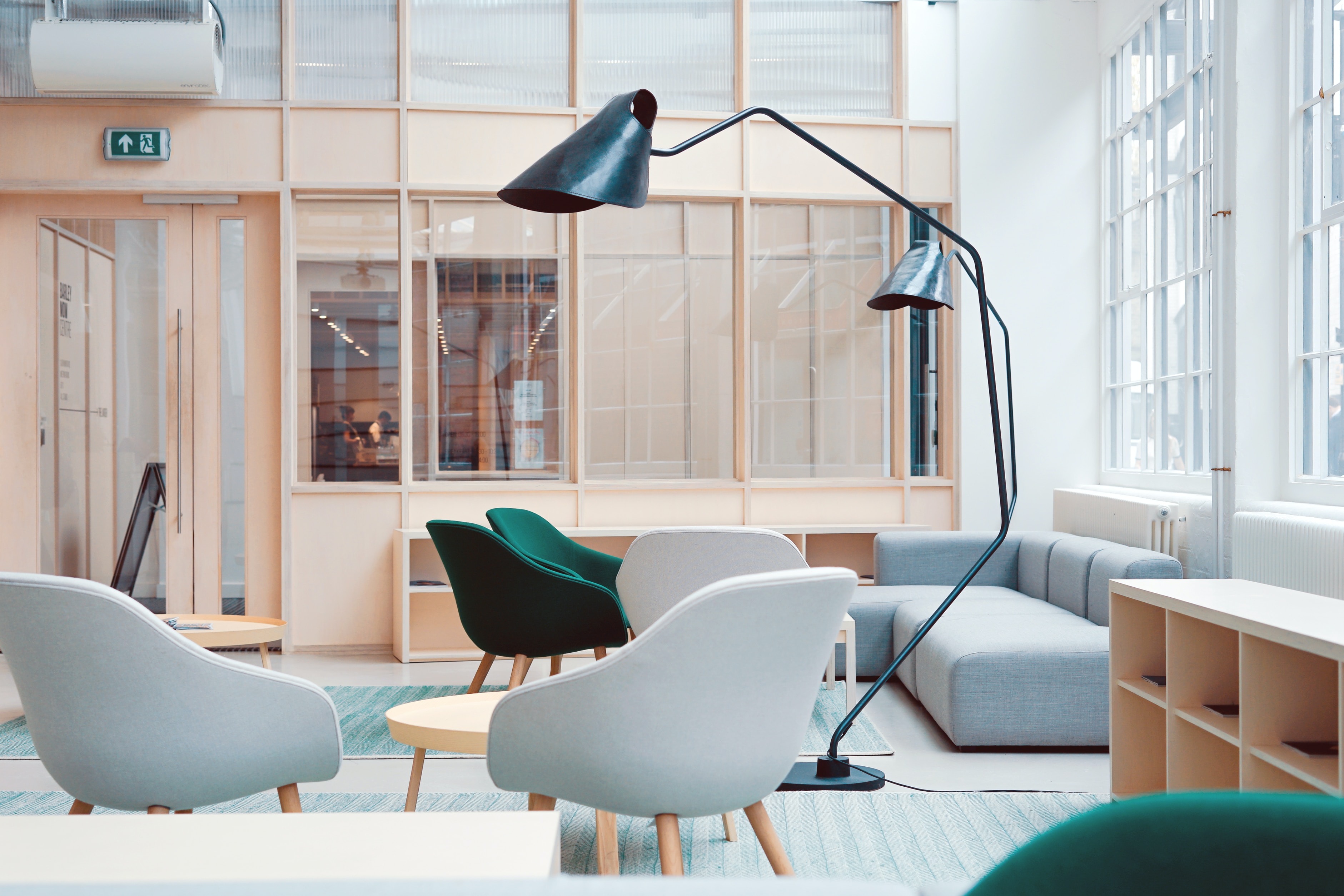How to incorporate privacy to an open plan office

Arrange desks and workstations to minimise direct line of sight between employees. PHOTO/Gloria Irakunda.
What you need to know:
Open plan offices have come with potential drawbacks. These include noise, lack of privacy, distractions, reduced focus for tasks that require concentration and potential negative impacts on employee well-being.
EncompEncompassing privacy in an open plan office is essential to ensure that employees have a comfortable and productive environment. An open office layout is known for its flexible workspaces that allow employees to choose where to work from based on their tasks. This can include quiet zones for focused work, collaborative areas for team discussions and open areas for general work.
Hakimuddin Sabunwala, a director at Mystique Developers Limited, in Kampala says creating a balance between the open concept’s collaborative nature and individual privacy requires thoughtful planning and ongoing evaluation.
“Employers should consider the unique needs and preferences of their employees and adapt the office space accordingly, to achieve an optimal balance of privacy and collaboration,” says Sabunwala.
To create a peaceful work environment, Sabunwala says elements such sound-absorbing materials, ceiling tiles and partitions can be incorporated in the space.
“Noise-canceling headphones can be provided to employees to block out background noise when necessary as well as installing phone booths or small meeting rooms for employees to use for private conversations or video calls. These should be equipped with soundproofing materials,” Sabunwala says.
While incorporating privacy in an open plan office, Sabunwala says there are different strategies suitable for different types of workplaces.
Office partitions
These are the most common solutions for open plan offices. They come in different styles, designs, and heights to provide flexible layouts that meet employers’ and employees’ needs. They offer visual, acoustic and personal privacy.
Acoustic screens
Acoustic screens made of materials like fabric, cork, or acoustic glass can reduce noise levels while adding visual privacy. They also improve focus and productivity in busy workplaces.
Innovative seating solutions
Use of a combination of different seating options, including phone booths, pods, collaboration spaces, and hot desks is crucial. By allowing employees to choose a range of seating options, you enable them to work in environments tailored to their needs.
Personalised office space
Employers can introduce personalised workspace solutions that give employees a sense of belonging. Buy ergonomic furniture that is practical and comfortable, whilst also reducing tension and anxiety levels.
Plants and green zones
Sabunwala notes that incorporating green spaces with plants can work wonders for privacy in an open plan office because they absorb sound, purify the air and enhance the overall aesthetics.
“By adopting these strategies, you can create a much more functional workspace that encourages productivity, creativity, and collaboration, while providing visual and acoustic privacy,” explains Sabunwala.
How to achieve privacy in an open plan office
Sabunwala recommends the following strategies and elements to achieve privacy in an open plan office.
Desk dividers
Desk dividers or screens provide a sense of personal space and reduce distractions. These can be both visually and acoustically effective.
Plants and greenery
Incorporate plants and greenery into the office design. They not only improve air quality but also create a sense of separation and privacy.
Workstation customisation
Allow employees to personalise their workstations with items like desk screens, adjustable monitor arms, and personal storage to provide a sense of ownership and privacy.
Collaborative technology
Investing in collaborative technology tools such as video conferencing systems, can reduce the need for in-person meetings and the associated noise.
Training and awareness
Educate employees about the importance of privacy and respect for their colleagues’ needs. Promote a culture of consideration for others in the office. Establish a system for employees to provide feedback on the office layout and privacy arrangements. Regularly assess and adjust the workspace based on their input.
Why privacy?
Sabunwala notes that privacy promotes individual freedom and autonomy, allowing employees to have personal space and control over their work environment.
“Having privacy in the workplace enables employees to concentrate on their tasks without constant interruptions or distractions, leading to increased focus and productivity,” he says.
Additionally, privacy in the office fosters a sense of trust and psychological safety among employees. When individuals feel that their personal information and activities are respected, they are more likely to feel comfortable and secure in their work environment. This, in turn, can lead to improved job satisfaction and morale. Privacy also plays a crucial role in protecting sensitive information and preventing data breaches.
Employees handle confidential data, such as financial records, customer information, or trade secrets, which need to be safeguarded from unauthorised access or disclosure. Respecting privacy helps maintain confidentiality and uphold ethical standards within the workplace.
Maintaining privacy in the office aligns with legal and ethical considerations. Laws and regulations, such as data protection and privacy laws, require organisations to respect and protect individual privacy rights. Adhering to these regulations not only avoids legal consequences but also demonstrates a commitment to ethical practices, enhancing the overall reputation of the organisation.
Advantages of an open plan office
Sabunwala says open plan offices are often more cost-effective than traditional offices with individual offices or cubicles. They require less square footage, and it is easier to accommodate a larger number of employees in a given space as well as encourage collaboration and interaction among employees.
“The absence of physical barriers can make it easier for colleagues to communicate and work together. With everyone in the same open space, it is easier for employees to overhear conversations, making it more likely to be aware of what is happening in the company. This can facilitate quicker decision-making and problem-solving,” Sabunwala explains.
Open plan layouts can foster a sense of community and team spirit as employees work in close proximity. This can help build stronger working relationships and improve morale. Sabunwala adds that open plan offices are often more adaptable to changing team sizes and organisational needs. Employers can reconfigure the space more easily to accommodate growth or changes in department structures. With an open plan office it is possible to design with a modern, sleek aesthetic that can be visually appealing and attractive to employees and clients.
Open layouts often maximise the use of natural light, which has been shown to have a positive impact on employee well-being and productivity.
“For organisations looking to cut costs, open plan offices can help reduce real estate expenses and utility costs while promoting spontaneous discussions and idea sharing, fostering creativity and innovation among employees,” he says.
To maximise the benefits of an open plan office, employers need to carefully plan the layout and consider strategies to mitigate the disadvantages.
Policies
Hakimuddin Sabunwala, a director at Mystique Developers Limited, in Kampala underscores the importance of developing and communicating privacy policies that encourage employeesto be respectful of each other’s space and need for concentration which can encourage the use of shared spaces for discussions and meetings.




